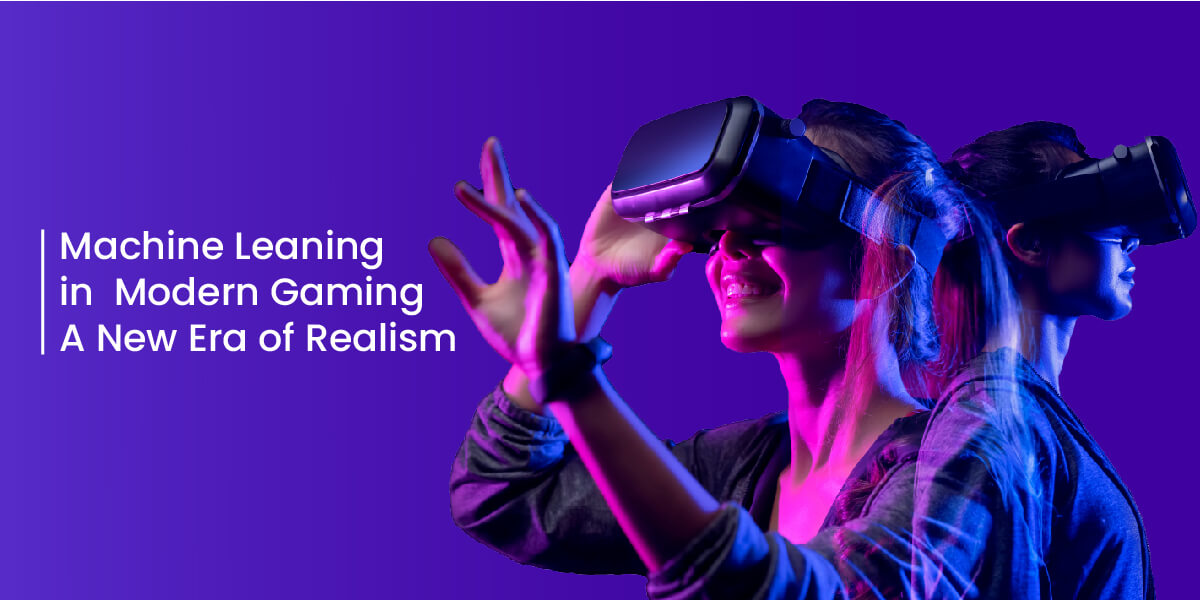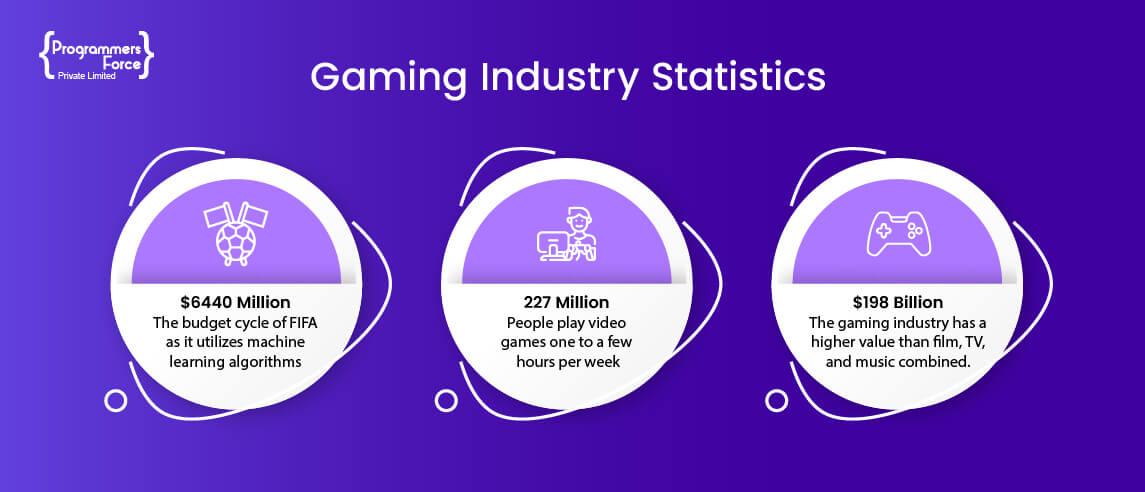
Machine Learning in Modern Gaming – A New Era of Realism
Artificial Intelligence and its in-demand counterpart, machine learning, are reshaping every sector, from financial to healthcare. The recent transformation and developments in the technological landscape are paving new ways for machine learning to conquer business industries, especially the gaming sector.
For instance, game development firms create stunning architectures and have achieved impressive results in developing realistic visuals that match real-world environments.
The creation of more interactive AI agents by the implications of machine learning has significantly improved the current game development industry. However, these developments are still in their early stages but pack a lot of potential for the future. This blog focuses on all the core aspects of machine learning in modern-day development.
Machine Learning in Video Games
Machine learning plays an integral role in video game development. The current e-sports market is evolving at a rapid pace. In 2021, the gaming market was valued at $198.4 billion. This figure is more than the combined music, film, and television industries.
Moreover, the sector is expected to be doubled in the near future, creating more opportunities for developers to use the latest technologies to transform the gaming experience completely.
Advantages of ML in the Modern ESports Industry
We can see that AI and ML play a significant role in today’s video game production pipeline. Here is a quick review of how machine learning helps the gaming industry and its consumers.
Using machine learning solutions in video games has several benefits for developers.
- Observe how competitors perform to develop fresh ideas and draw in new clients.
- Improve the user experience by making more lifelike and engaging images.
- Find the cheats and block the crackers from ruining the game.
- It enhances content creation with the help of computer-generated visuals and creative audio in-game.

The Emerging ESports Landscape with ML
Today, AI and ML (Machine Learning) can be observed at every instance of the game development lifecycle. Firms invest incredible amounts when creating game architecture, a highly resource-intensive process, such as shooting a movie or animated film. Since AI, or ML, enables developers to train computers for automated functionality, it saves time and energy, offering a unique user experience to players. Two different areas in ML ensure game development. They are primarily aiding game developers in building games and acting as companions against or alongside other players.
1: Highly Interactive NPCs
NPCs are the other game’s visual characters that contribute to the rich environment of the game, providing a realistic experience to players. Every gamer enjoys interactions with NPCs (Non-Playable Characters) in-game. These are the pre-scripted characters that game developers program to compete against other players in the game.
ML technologies play an integral role in developing NPCs algorithm allowing the fictional characters to appear as realistic as possible. Using ML technologies, developers can adjust the difficulty level as the game progresses. This is why each higher level is more challenging than the previous one in any game.
Rockstar’s GTA V is an excellent example of highly interactive NPCs. The game uses ML to make the game look incredibly realistic. Thief: The Dark Project is also another great example of machine learning algorithms.
2. Realistic Visuals
Gaming is nothing without stunning visuals. Game developers spend a lot of time and resources when creating in-game visuals to make E-Sports more appealing and aesthetic. The latest trend in the video game industry is more concerned with the visuals and look of the game.
ML tools and technologies help curate very well-oriented digital worlds in games that promise to revolutionise the gaming experience. A significant example of stunning visuals is the Microsoft Flight Simulator. The tech giant has paired with Nvidia, one of the prominent names in the computer graphics industry, to create computer vision algorithms for tackling visual rendering issues.
3. Richer In-game Environments
Making in-game interactions look more lifelike is another area where AI and machine learning help game developers. Such games typically feature non-player characters (NPCs), as discussed above, with whom the player can engage in scripted dialogue. Their answers, however, are restricted in scope and typically respond to on-screen pop-up cues.
Artificially intelligent characters (NPCs) who hold natural conversations, like Siri or Alexa, are already a reality, thanks to natural language processing.
Red Dead Redemption 2 by Rockstar Games is an example of a game in which players can interact with non-player characters and receive plausible replies inside the game’s setting.
4. Online Player Security
Unfortunately, hackers may target video games, especially those with wide player bases. These criminals can devise methods to access hidden features and other “cheats” in the game’s programming.
Popular games like Grand Theft Auto (GTA) had this problem in the beginning since users used cheat codes to get extra stuff.
Because of new technologies, experts in the field of artificial intelligence and machine learning have developed unique algorithms to aid video game firms in warding off cyberattacks and data breaches. These models track players’ actions over time and issue alerts if they notice something fishy.
5. Easy Modeling of Complex Systems
In recent years, machine learning has made games increasingly lifelike and realistic. When in-game programming events that are not under the control of the player, such as the weather, developers integrate several ML models to anticipate the outcomes of the player’s actions.
The adoption of such models by FIFA is an excellent example. When you’ve put together a team of players, the soccer video game predicts how they’ll get along based on their performance in real life. The algorithm will modify the team’s morale when you make a mistake or get applause from the crowd.
6. Predicting Future Player’s Moves
Machine learning and data science have made it possible to track each player’s stats and anticipate their moves in games. With this information, game development firms can give customers targeted ads, messages, and suggestions. Meanwhile, gamers will value a more individualised strategy, and the vast majority will be eager to spend money on games comparable to those they already enjoy or try something new.
How Programmers Force Can Help?
It’s safe to say that AI and ML are significant forces in the gaming industry. As time has progressed, more games have begun using machine learning algorithms. Developers may now spend their efforts making games more enjoyable without sacrificing quality. Modern machine-learning approaches create a more realistic gaming environment for the players.
Programmers Force offers machine learning solutions that make a difference in modern game development. The firm is envisioned to innovate and push forward teams, breaking barriers to unlock new opportunities with emerging technology stacks.






